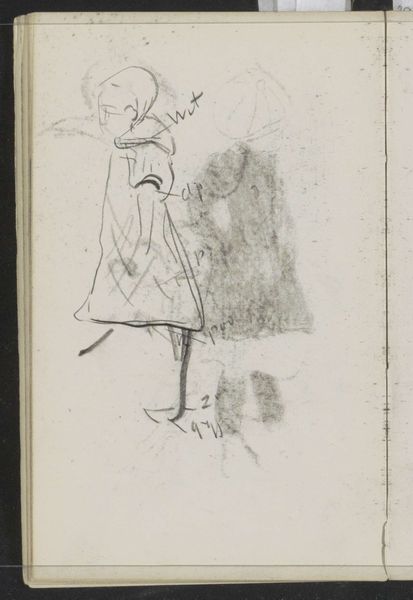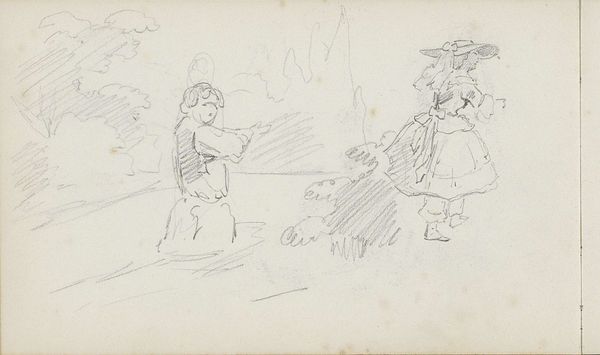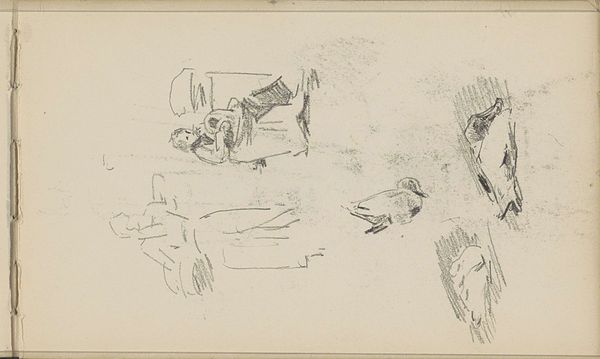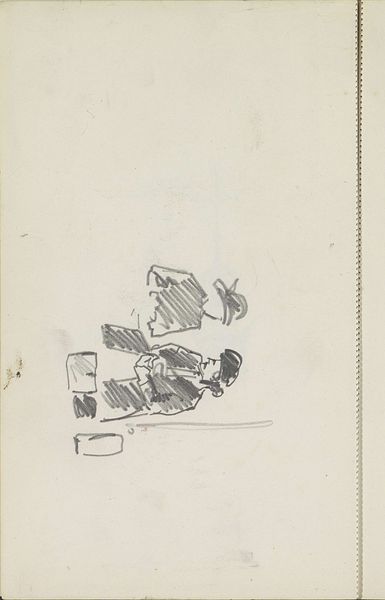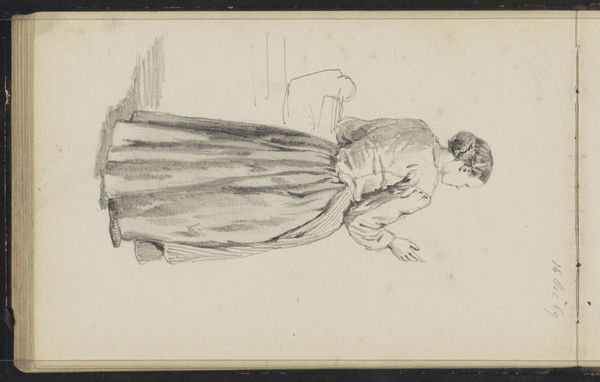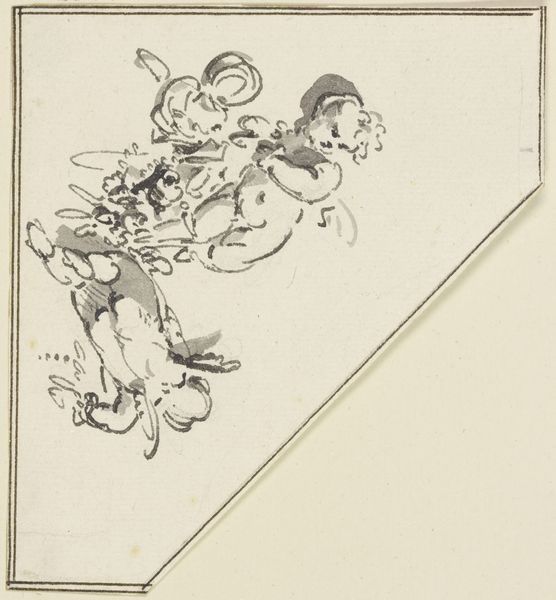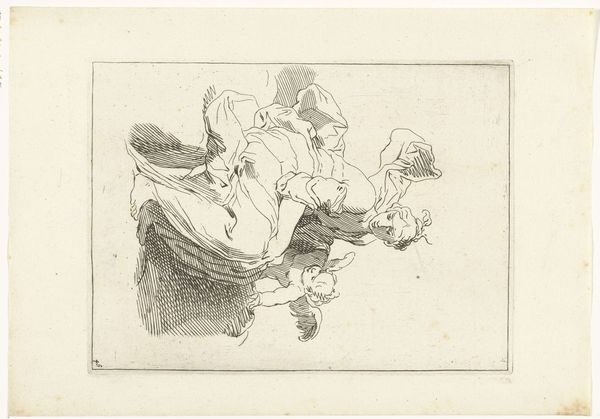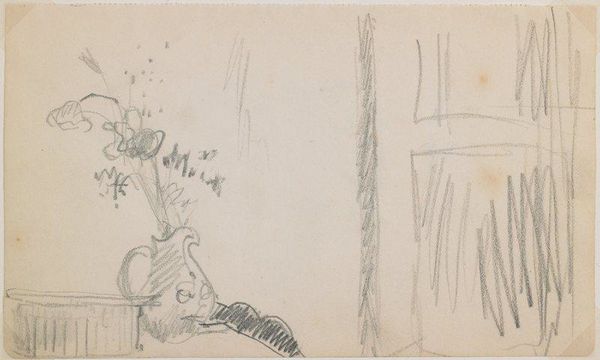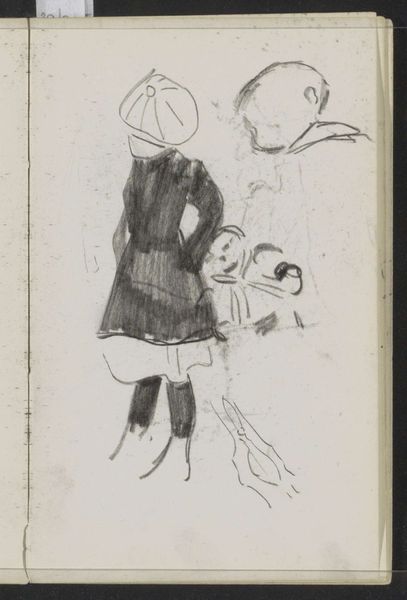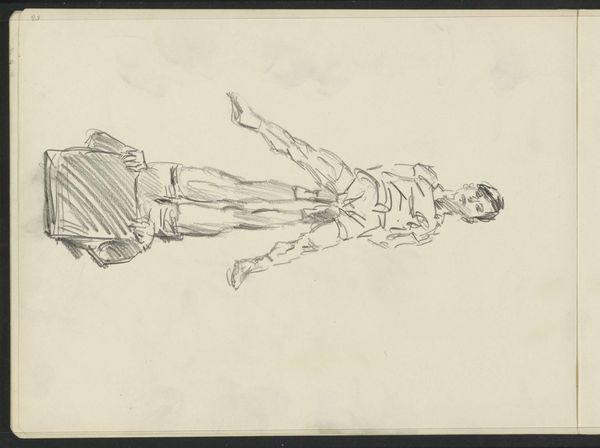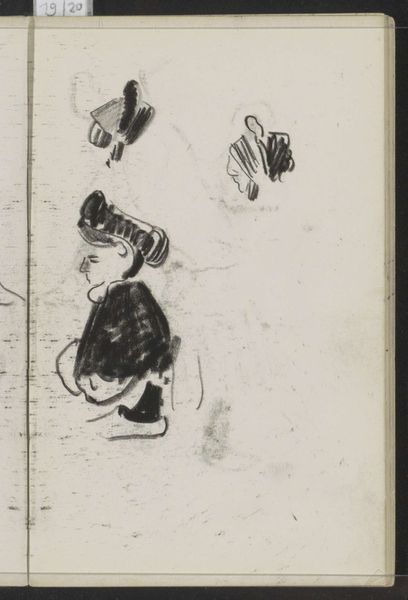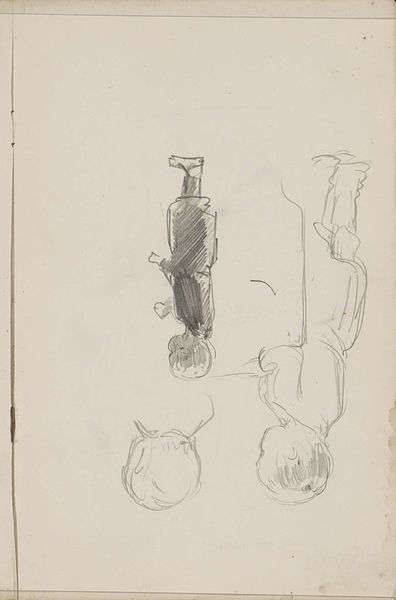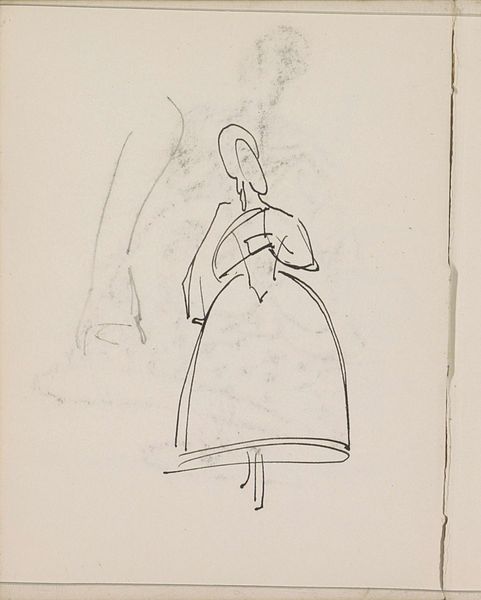
Dienstmeid met een emmer en een peuter die op de buik in het gras ligt c. 1892
0:00
0:00
drawing, pencil
#
portrait
#
drawing
#
pencil sketch
#
pencil
#
pencil work
#
genre-painting
Copyright: Rijks Museum: Open Domain
Editor: This is Julie de Graag’s pencil drawing, “Dienstmeid met een emmer en een peuter die op de buik in het gras ligt,” made around 1892. It’s a fairly simple composition; what stands out to me is the contrast between the upright maidservant and the sprawling child. How might we interpret this in the context of its making? Curator: Considering the materials – a simple pencil and paper – we might focus on the availability and cost. Who would have had access to these materials, and for what purpose? Was sketching considered a ‘serious’ art form at the time, or more of a pastime, particularly for women artists like de Graag? It seems relevant to analyze what opportunities might have been afforded to someone of de Graag's gender and social status at this time. Editor: That’s a good point. Did the accessibility of pencil drawing allow for greater artistic expression outside traditional academic structures? I wonder how this informs her subject matter, too. Curator: Exactly! This genre scene likely reflects de Graag’s everyday experiences and perhaps the labor of domestic life that she, or someone close to her, observed. Notice the details – the maidservant's dress, the placement of the pail. How do these specifics shape our understanding of class and labor roles? How does the image itself serve as a commodity? Was it intended for sale, personal use, or some other purpose? Editor: I never thought about how the drawing itself becomes a kind of document of labor. Examining it this way certainly highlights aspects I would have missed before. Thank you. Curator: Indeed, seeing art through the lens of its production – its materials, processes, and social contexts – provides valuable insight into its meaning and significance. It really prompts us to re-evaluate the boundaries between “art” and everyday life.
Comments
No comments
Be the first to comment and join the conversation on the ultimate creative platform.
